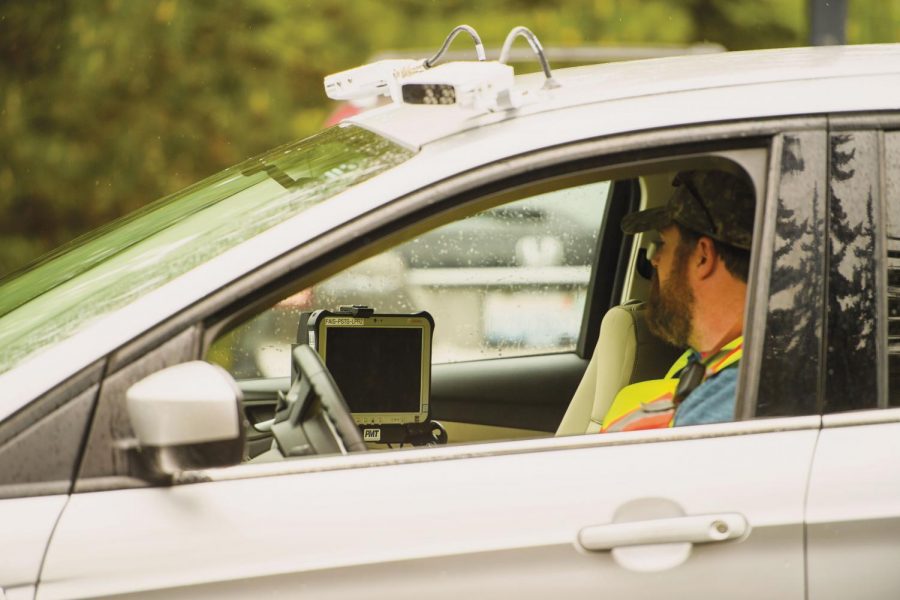Parking to switch to digital system
Move comes in effort to lower wait times, switches still allowed
Cars such as this one will use license plate recognition, or LPR, starting in 2019 and will replace physical permits for on-campus parking in an effort to ease buying process.
July 3, 2018
WSU Transportation Services will implement license plate recognition, or LPR, in place of physical parking permits in 2019-2020.
The new system will take pictures of license plate numbers on parked cars on campus through a mounted camera. The numbers will be sent and matched with a database of parking permit holders, said Chris Boyan, associate director of WSU Transportation Services.
Permit holders who switch permits between cars will still be able to do so. The technology will register which of two cars is on campus. This will eliminate the need to take out a physical permit and move it around, he said.
Boyan said he believes the system will be a good change for WSU.
“We feel like this is going to be a real positive,” he said.
$150,000 was budgeted for LPR technology, however the total cost came to $130,000. This extra funding means there will be no increase in parking permit prices in the next school year due to the new technology, Boyan said.
The goal of the new system is for consumer ease, he said. Instead of standing in line at the transportation office to pick up a parking pass, permit holders will be able to get their pass online.
“We want things to be as seamless as possible for our customers,” Boyan said. “If they don’t have to think much about parking, that’s a win for us.”
Since the beginning of LPR seven years ago, there has been a stigma surrounding the technology and what it means for privacy.
“People see cameras on cars and they think they’re getting everything,” Boyan said. “Privacy is important to our customers.”
Although the mounted cameras will be taking pictures, the photos will only be of the license plate and a context image of the car in the space. Every 90 days, the data from cars without violations will be erased, he said.
The only information remaining will be how many cars were in a lot at one time.
“We use that in lot-utilization data, so it’s important to us to keep track of how many open spaces we have in our parking system at one time,” Boyan said.
Nicholas Prante, assistant director of facilities and operations at the Student Recreation Chinook, said to begin the switch to LPR the SRC will be the first to utilize it.
He said recreation center users will begin typing their license plate number into the payment kiosk July 2.
Prante said he is looking forward to the new system.
“I personally am excited for the change, I think it will be kind of easy,” he said.
Since there will no longer be a physical ticket to put in car windows, users can cut down on the time they have to spend dealing with their cars, Prante said.
In the future, the LPR technology at the SRC could also lead to some other user-focused changes, such as moving the permit kiosk.
“LPR allows us to potentially look at moving the pay station to a different location so we can clean up some of the traffic that can sometimes line up waiting for it,” Prante said. “Everything sounds like it’s going to be a pretty cool change and I think it will help our service in the future”
Boyan said the process of changing to the new technology will be slow to give patrons time to adjust.
“Make sure your accounts are up to date,” he said.





















